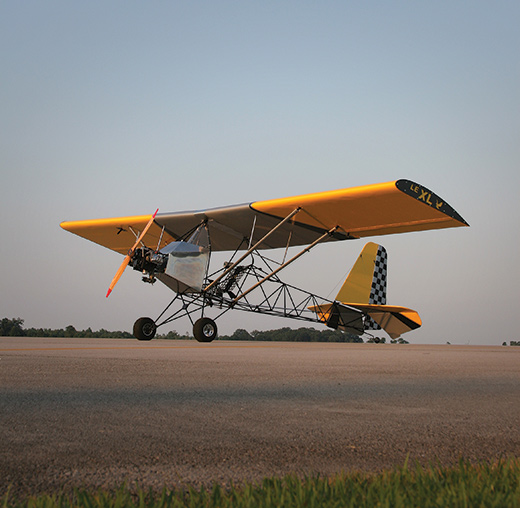 The race was on to complete one more lap around the traffic pattern before the sun sank beneath the horizon and capped a glorious evening of flying. The previous 45 minutes had been a combination of loitering over the rolling countryside looking for grazing herds of whitetail deer, interspersed with several touch-and-goes to sharpen rudder skills. This flight was a composite of countless evening sorties I’ve flown for the past two decades, but instead of turning 8 gallons of precious avgas into noise with my RV-6, this excursion was conducted behind the stick of my Legal Eagle XL. The sunset flight was enjoyed not from within the RV’s acrylic canopy, but with the sun-tinged atmosphere swirling through the Eagle’s open cockpit, accompanied by the little half-VW enthusiastically barking through its short exhaust stacks as it sipped 2 gallons of auto gas.
The race was on to complete one more lap around the traffic pattern before the sun sank beneath the horizon and capped a glorious evening of flying. The previous 45 minutes had been a combination of loitering over the rolling countryside looking for grazing herds of whitetail deer, interspersed with several touch-and-goes to sharpen rudder skills. This flight was a composite of countless evening sorties I’ve flown for the past two decades, but instead of turning 8 gallons of precious avgas into noise with my RV-6, this excursion was conducted behind the stick of my Legal Eagle XL. The sunset flight was enjoyed not from within the RV’s acrylic canopy, but with the sun-tinged atmosphere swirling through the Eagle’s open cockpit, accompanied by the little half-VW enthusiastically barking through its short exhaust stacks as it sipped 2 gallons of auto gas.
Back to Basics
This was another step on my path to rediscovering the simple pleasures of low-and-slow, inexpensive flight. The RV-6 has transported me to distant corners of our country, taught me much about flight and perseverance in completing a complex project, and remains a wonderful means of enjoying the social circles surrounding weekly breakfast outings. But economic reality has put a damper on many of the joyrides that often occurred on summer evenings merely for the purpose of relieving the stress of a busy week. While $60 may be a reasonable fee for an hour on the therapist’s couch, it is now a bit painful to watch those dollars flowing through the fuel computer during a leisurely flight to nowhere.
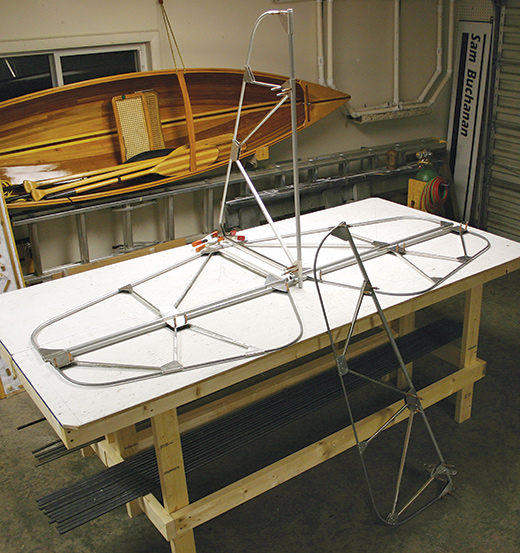
The empennage is light and stiff, about 6 pounds prior to covering. Simple aluminum gussets and pulled rivets secure thin-wall aluminum tubing to form the control surfaces. Full-sized patterns were drawn on the tabletop and the components jigged with wood blocks. The table was later reconfigured to 2×16 feet for fuselage and wing assembly.
Some of the most enjoyable aviation I have ever experienced was shared with a 1940 J-3. The Cub reawakened the very reasons I want to aviate, and the economy of operation resulted in guilt-free flights. It was the desire to return to Cub-like flying that prompted me to add the Legal Eagle to my hangar, not dissatisfaction with the RV. The two aircraft are perfect complements and offer access to opposite corners of the performance spectrum.
What I did not expect to find, however, was the high level of interest my Eagle triggered from fellow RV pilots, both in person and via the Internet. It seems I tapped into a realm of thought shared by many aviators as we face increasing budget pressure and medical concerns looming over the horizon. The sheer joy of flight introduced us to aviation, and many of us are now eager to close the loop and return to a simple mode of flight because it is, well, fun. The RV-6 and the Legal Eagle XL are my tickets to enjoying aviation fully, whether the mission calls for cross-country travel, seeing the earth through the top of a canopy or chasing the sunset, at a leisurely pace, at treetop level.
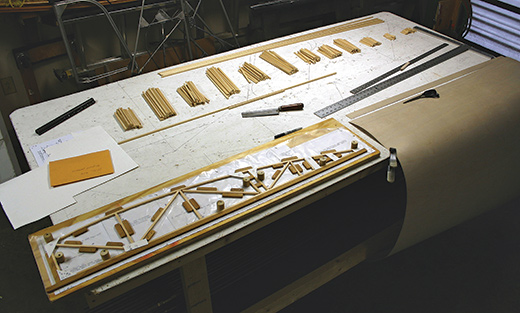
An organized workstation is the key to expedited rib assembly. All necessary rib parts were cut in advance and placed in order of assembly. Rib construction is conventional spruce cap strips in a truss design. Lightweight plywood gussets are glued in place on the rib fixture and temporarily secured with small staples.
The Legal Eagle XL is the latest version of the classic Legal Eagle ultralight first designed by Leonard Milholland 20 years ago. Many options exist for craftsmen wanting to build light, simple aircraft that meet the parameters of Part 103, but Milholland’s aircraft depart from ultralight convention by being designed around a four-stroke engine. Two-stroke powerplants have always been the norm for ultralights, but after 250 hours of Rotax flight, my interest in flying a two-stroke engine waned. The failure mode of a four-stroke is more predictable, and the exhaust note more enjoyable. The half-VW uses the two rear cylinders of a Beetle-based engine to yield a powerplant that is light enough to fit within Part 103 if careful attention is given to airframe design and construction. Milholland is fanatical about “adding lightness” to his designs, and the Legal Eagles are exercises in elegance that include only what is needed to fulfill the mission—nothing more. These priorities result in an ultralight aircraft with conventional construction and flight characteristics and the four-stroke reliability many of us demand. The Eagle is a ticket to the regulatory and medical freedom Part 103 provides and is attractive to the pilot population that may already own a heavier aircraft but also wishes to enjoy simple, inexpensive, hassle-free flying.
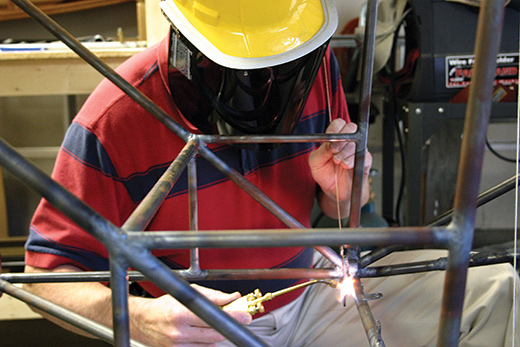
A Meco Midget torch is ideally suited to welding the Legal Eagle fuselage and associated brackets. The helmet shield works nicely with bifocal glasses and is comfortable to wear for extended work sessions. Welding rod used was ER70S6, and 1 pound of it was sufficient for the fuselage.
The Legal Eagle fleet, consisting of the original Legal Eagle and the newer XL and Double Eagle, is built from plans marketed by Leonard Milholland. These hand-drawn plans are on 60 pages of letter-sized paper and at first glance appear to be rather elementary and oversimplified. But all critical dimensions are included, and even a novice builder can fabricate the various assemblies after carefully studying the drawings and build notes. A Legal Eagle Yahoo group is frequented by knowledgeable builders who can provide background information if needed. Milholland also offers videos illustrating construction of his personal aircraft that fill gaps in a builder’s understanding of the project.
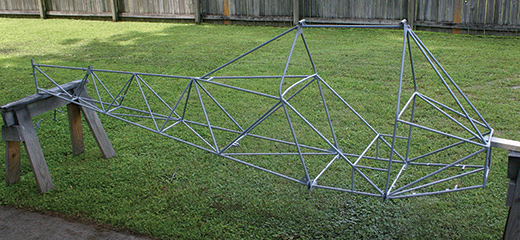
The fuselage is welded, primed and ready for finish paint. Most of it is 5/8×0.035-inch 4130 steel, and the entire assembly weighs only 35 pounds. Only simple jigs are necessary on the 2×16-foot table to align the longerons and cross-members. The fuselage design can be easily modified to fit a particular builder.
In the Workshop
Two 2×8-foot tables were constructed early during the XL project so that the fuselage, tail and wings could be assembled with simple jigs. The Eagle XL fuselage is welded 4130 tubing and appears conventional in design to any builder who has seen a Champ or Cub fuselage. In my role as an EAA technical counselor, I have assisted many builders, but most of them were RV owners. Fabrication of a welded fuselage such as those found in most classic aircraft remained a mystery to me and appeared to be more black art than science. But the Eagle served as my introduction to oxyacetylene welding, and I came to enjoy assembling a fuselage in the traditional manner. There is something Zen-like about welding a fuselage, and the Eagle’s is light and strong. A Meco Midget torch proved to be comfortable to handle but still capable of welding all of the fuselage clusters. A simple rotisserie made with an engine stand allowed the fuselage to be rotated so the finish welding could be accomplished while sitting in a shop chair.
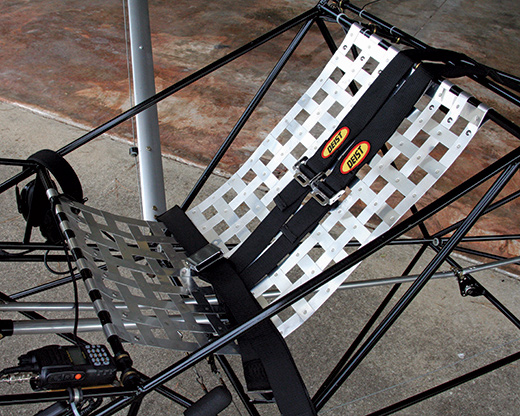
One of the distinctive features of the Legal Eagle is the basket-weave aluminum seat. In spite of its appearance, it is quite comfortable and weighs only 1 pound. A Vertex handheld radio driving an external antenna allows the Eagle pilot to stay informed of local traffic. The ride behind the windscreen and 4.5-gallon cowl tank is comfortable without wind buffeting.
The 26-foot-span XL wing is constructed with aircraft-grade wood and T-88 epoxy. Its design is based on the highly regarded Mini-Max wing, which is familiar territory for me since my first two aircraft projects were a Fisher Flying Products Super Koala and a TEAM Mini-Max. Milholland load-tested an XL wing to +6 G with no permanent deformation; the heavier Double Eagle wing has been thoroughly reviewed by an aeronautical engineer. The wings can be readily detached from the fuselage by two people for seasonal transport or storage but are not intended for frequent removal.
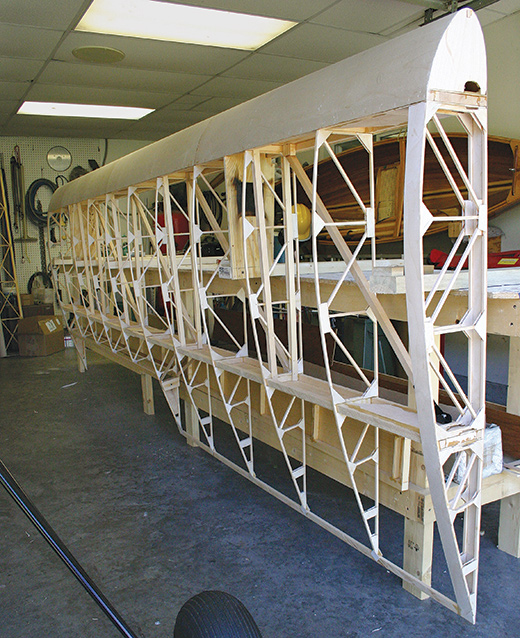
The wing panels weigh about 30 pounds each and incorporate spruce anti-drag diagonals, lightweight plywood leading edge and built-up spars. The ailerons are built with the wing, then detached when completed. Hinges are simple pins in spruce blocks and allow easy detaching of the ailerons.
Ribs consist of 1/4-inch spruce cap strips and lightweight plywood gussets, and I found each of the 26 ribs could be constructed in a total of 30 minutes. After two weeks of part-time labor, a diligent builder can be rewarded with a stack of ribs that are ready for assembly to the spars. The spars are spruce cap strips with 1/8-inch ply webs, and common shop tools are all that is needed for spar fabrication. Wing assembly proceeds quickly after the ribs and spars are built, and soon the shop takes on the aura of an airplane factory. All brackets and fittings are detailed on the plans and can be fabricated from readily available sheet, angle or tube stock.
The tail surfaces are aluminum tubes assembled with pulled rivets and gussets. While appearing flimsy at first, after final assembly the empennage surfaces are amazingly stiff and light. Each surface weighs about 1 pound! The tail group is an excellent launch for the novice builder because shop area and tool requirements are modest, and empennage fabrication promotes confidence in the remaining build process. Simple 4130 tubing hinges allow the surfaces to flop as designed and details for all the control horns and attach fittings are included in the plans.
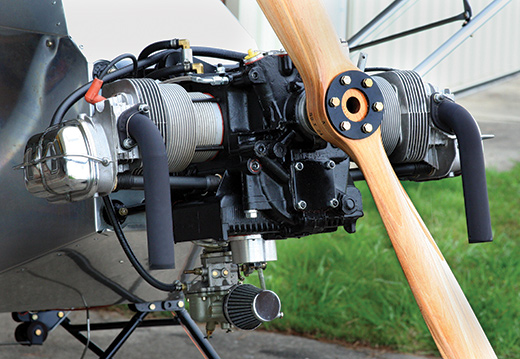
The Hummel 45-horsepower engine weighs less than 90 pounds and consumes about 2.5 gallons per hour of 93 octane auto fuel at cruise. The Tennessee Prop 58×24 propeller yields 64 mph at 2900 rpm. The cylinders are of billet aluminum that weighs 5 pounds less than steel cylinders. The oil cooler is wrapped around the intake manifold and prevents problems with carb ice. A Slick magneto fires Bosch automotive plugs.
But it is firewall-forward that receives the most attention from visitors to my hangar. The diminutive half-VW is unique to this particular corner of aviation and is looked upon with wonder by those who are accustomed to Lycomings. The half-VW weighs less than 90 pounds and ranges in output from 25-45 horsepower, depending on the bore and stroke. Milholland strongly advocates the “full-case” half-VW, which does not require cutting the case in half, and offers a manual for fabrication of this version of the engine. But while that is the simplest version to build, I opted for the “cut-case” variant, purchased as a ready-to-run engine from Hummel Engines. So XL-58 flies with a 45-hp half-VW (94mm bore, 86mm stroke, resulting in 1200cc) breathing through a single Zenith carb. A Slick mag from a two-cylinder ground-power engine provides the sparks and uses parts common to the popular 4300 series of Slicks. Once the starting drill is learned, the little engine fires on the first blade when given a vigorous pull.
The wings and tail of XL-58 were covered with non-certificated 1.8-ounce fabric attached and sealed with the Poly-Fiber process. But the original silver Poly-Spray finish proved to be difficult to see against ground clutter, so I added color with latex house paint after the plane was at the airport. This non-traditional process has been used for years on Experimental/Amateur-Built aircraft with good results, and I am pleased with the quality and low cost of the final finish on my Eagle. The ability to add the color coat without resorting to spray application was a huge bonus in the airport hangar.
Total cost of the XL-58 came to just under $10,000, including the new engine. Many Legal Eagles have been built for less through creative sourcing of materials and building an engine with gently used components, but even a premium-priced version like mine will fit many aviation budgets as a second airplane. Liability insurance may be obtained via the United States Ultralight Association (USUA), which allows the Eagle to responsibly coexist with other inhabitants of an airport.
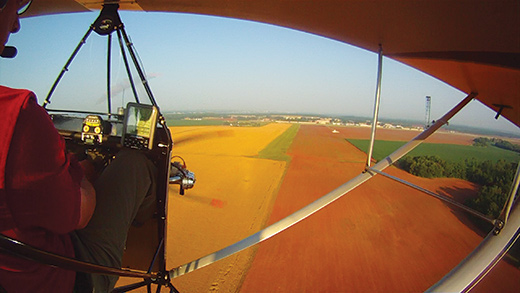
The only way to share the flying experience of the single-seat Legal Eagle is via in-flight HD video. A Drift HD170 Stealth camera is mounted to the Eagle fuselage so most flights can be captured for analysis or sharing. This is a screen capture from a video created at 720p resolution. A remote microphone is located behind the seat so that realistic audio of the half-VW’s mighty roar can be recorded.
Fly like an Eagle
But the most intriguing aspect of the Legal Eagle for this RV builder is not the mechanical details but the utter simplicity and purity of the little plane. This is aircraft construction distilled to the simplest elements—no avionics, electrical system, interior, canopy or expensive paint. Every component of the plane is exposed for easy access and inspection. The simplicity, slowness and low cost of the Eagle are in stark contrast to the RV’s complexity, speed and expense. Just as the RV is ideally suited for its purpose, the minimalism of the Eagle makes it perfect for its mission.
Lest anyone think the ultralight Eagle will dumb down RV-honed flying reflexes, be assured that learning to fly a very light aircraft proficiently can enhance airmanship skills and challenge even an experienced pilot. There is a full performance envelope to be explored, even though it resides at speeds and altitudes not common with the RV. I have several hundred hours in light aircraft, but the past 1100 hours have been exclusively in the RV-6. Consequently, I was only partially prepared for the astounding lightness of the Eagle. Even though XL-58 is flown with control inputs familiar to a Champ or Cub pilot, the ultra-low wing loading and flying weight make for an eye-widening transition for the pilot accustomed to aircraft weighing hundreds of pounds more than the Eagle. A stiff breeze is not a challenge to flight; it’s a challenge to taxiing! And flying in midday turbulence brings new appreciation to how our atmosphere consists of invisible swirls and eddies. Even though the XL has a traditional plan form, the ultralight pilot needs an appreciation of how low mass and high drag impact aircraft performance to avoid coming to grief due to rapid airspeed decay if the plane is mishandled. But after a few hours of acclimation and shakedown flights, I came to appreciate the classic characteristics of my Eagle and how nicely suited it is for its intended purpose. The Legal Eagle is an honest airplane: It will reward the smooth pilot and embarrass the ham-fisted, and therein is the key to satisfaction achieved by the demonstration of good airmanship. The Eagle pilot is reminded that only coordinated flight will keep the slip ball where it belongs. Flying a pass down a rural runway and watching the Eagle’s wheels gently swish through the grass without touching the earth is a simple pleasure for which this aircraft is ideally suited.
So the Eagle and I are attracted to late evening skies like moths to a lamp. Sunset urges us to make one more lap of the pattern as the cares of the day slip away like the earth’s mosaic sliding beneath us. The RV-6 in the hangar is content, not jealous, knowing my affair with the Eagle will be interrupted when there is a need to actually go somewhere. Meanwhile, the RV and Legal Eagle, high and fast, low and slow, form a perfect combination.
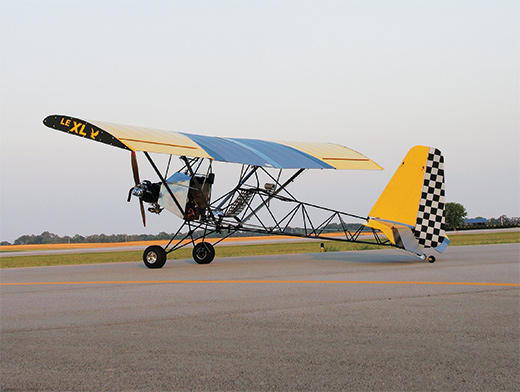


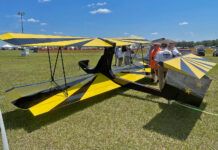
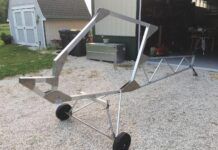
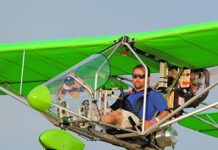
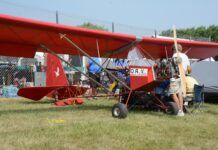
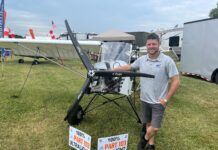
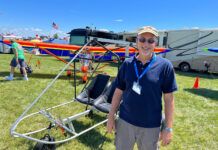
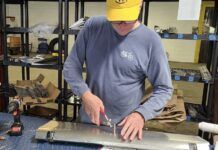
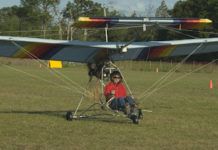
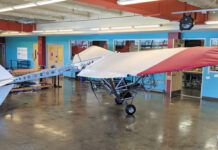
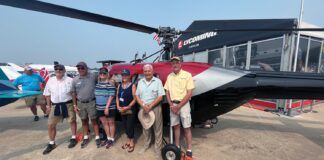
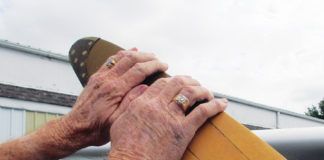
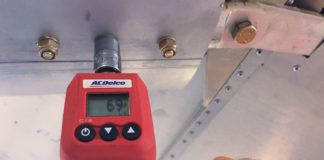
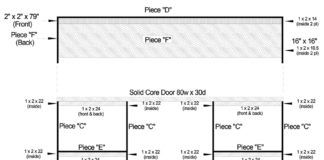
fantastic article. I am destined to build one, just need to start! My second bedroom is too small, my garage is converted and I’m strongly motivated to rent it out, and that leaves just barely enough space in my back patio area, presuming 1 tenant parks a car there, but I digress. I’ve wanted to get my license forever but after recently paying for 1 hour of flight time (1 hour of plane time and 3 hours of instructor time!) , which is somewhat understandable given that includes ground school training, I could build this plane before I can afford to finish my pilot training. Not to say I do not highly value private pilot lessons, I am sure I will continue to increase my hours as the years progress, especially into a LSA rating at a minimum, but the honest truth is the complexity and cost of even a LSA rating are so prohibitive they keep the majority of the public out of general aviation, which is truly a shame! So when I first learned about ultralights, and then saw this legal eagle powered by a VW, I knew it was the one. I used to have a sand rail and fondly remember (at least that’s what I tell myself) getting stuck in a bowl at pismo dunes (shitty bald tires mostly…) and the carb cover came off one of the carbs and I sucked sand into the engine and seized it.. Long story short VW engines are ridiculously easy to work on and I remember by old friend and me holding up the engine one on each side while my mom took a picture. Those were the good old days but I want more new good days ahead and I am convinced beyond a doubt that I need to build this plane. I got the tools, money, just enough experience to think I can finish it and…guess I don’t have any excuse not to start now that I FINALLY have a house! See you up there one day I hope, maybe at Oshkosh or the next LE gathering 🙂
Muito bom légua gostei
There are a few attributes that seem especially good about the Legal Eagle: It is extremely simple and therefore likely reliable; it is an ultralight and therefore doesn’t require a license to fly; and it has an engine that is also simple, easy to maintain and doesn’t require a reduction drive.